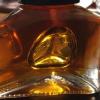Close Up Photos Of Abrasives Used On Nibs
-
Forum Statistics
354.9k
Total Topics4.6m
Total Posts -
Member Statistics
128,045
Total Members18,857
Most OnlineNewest Member
DanielErome
Joined -
Images
-
Albums
-
Extra Fine Nib Ink Reviews (19 of n)
- By LizEF,
- 0
- 71
- 71
-
USG 7
- By USG,
- 0
- 0
- 74
-
Misfit’s 3rd Album for pens, paper, ink
- By Misfit,
- 4
-
DougC
- By Doug C,
- 0
- 0
- 1
-
Andrew Lensky Arts
- By Andrew_L,
- 1
- 20
- 38
-


















.thumb.jpg.f07fa8de82f3c2bce9737ae64fbca314.jpg)



.thumb.jpg.331e554113c33fb39d5bf3233878978a.jpg)





Recommended Posts
Create an account or sign in to comment
You need to be a member in order to leave a comment
Create an account
Sign up for a new account in our community. It's easy!
Register a new accountSign in
Already have an account? Sign in here.
Sign In Now